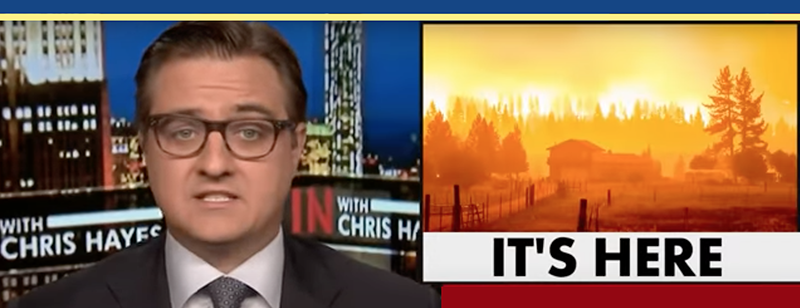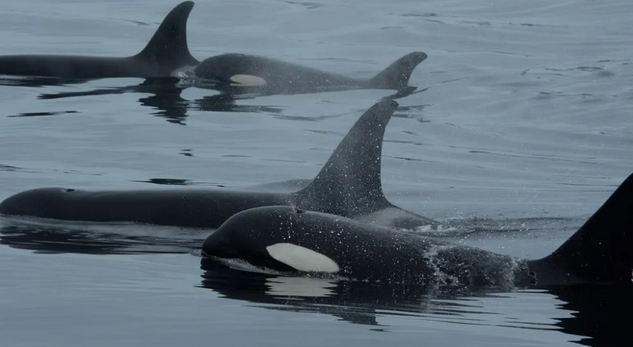||| FROM CHRIS HAYES for MSNBC |||
One of the most interesting questions, perhaps the most interesting question, about where America will be in 25 years is where Americans, literally, will live. And that’s inextricably linked to the most pressing unknown we collectively face, which is: Just how hot will our planet get?
The last decades in the U.S. have seen a steady internal migration, driven less by persecution or deprivation and more by weather.
One way to tell the story of this country is as a series of migrations. The first, of course, was the arrival on the continent of Europeans, who promptly forced a second mass migration and ethnic cleansing of the Indigenous people who had lived here for millennia. Soon thereafter, masses of slaves were imported to the American South as white Americans kept pushing the frontier west, forcing more and more Native people off their land until there was nowhere left for them to go.
In 1890, the U.S. Census director famously declared that the frontier was closed — but that didn’t stop people from moving. Millions of European immigrants arrived at our shores fleeing starvation and persecution, millions of Black Southerners fled north desperately hoping to escape the tyranny of authoritarian apartheid post-Reconstruction, and Dust Bowl refugees fled west to the alleged land of bread and honey in California.
We don’t think of our current age in the same terms, but the last decades in the U.S. have seen a steady internal migration, driven less by persecution or deprivation and more by weather. The states of the South, the Sun Belt and the Pacific Northwest have been gaining in population, while on the whole, the industrial Midwest and the Northeast have been losing population.
**If you are reading theOrcasonian for free, thank your fellow islanders. If you would like to support theOrcasonian CLICK HERE to set your modestly-priced, voluntary subscription. Otherwise, no worries; we’re happy to share with you.**









We have climate refugees that are fleeing the burning southern west coast. And it’s not just humans – many species are moving northward too. As many as 1 million species are now at risk of extinction, many within decades. We should expect and prepare for increased heat, dry, and fire conditions. California is the bellwether. It will not stop there. There will likely come a time when we become refugees, moving further north. Unless we can collectively choose to do the much simpler, lower cost, sensible thing, and rapidly reduce our fossil fuel use.
While the intent behind this article is undoubtedly well meant, the way it is written I find extremely off putting. The first line of the second paragraph, “One way to tell the story of this country is as a series of migrations.” would be more accurate if it said, ‘One way to tell the story of HUMANITY is as a series of migrations.’
Climate changes have caused human migrations since before the first hominids migrated out of Africa. This time, it’s about human caused climate changes on top of already occurring cycles. The old saying that “The only constant is change.” is as true now as 500,000 years ago. The challenges we face are not particularly new, nor even particularly extreme (yet), when you look at paleo-climatological data. Humans have feet; we can move when necessary. It might not be pleasant but it’s what we’ve always done. The real tragedy is the inevitable decline in species diversity among all those beings that cannot move or adapt to climate change and the devastating effects of the massive human population.
It’s a story about the USA (about America). The first sentence of the second paragraph when viewed in that context… fits well. Regardless of whether this is a story told around the world… that does not make America’s role in it any lesser.
Greenhouse gas emissions (HCFCs) are even more of a problem than the electricity consumption of an air conditioning unit. Here on the islands around 90% of our electricity comes from renewable sources. But the air conditioning itself emits GHGs which not only harm the ozone layer but also trap heat in a similar way to CO2 and methane, the more well-known GHGs.
David,
My Sanden heat pump water heater uses carbon dioxide as the refrigerant. Carbon dioxide is a greenhouse gas, but it is much less harmful than conventional refrigerants (a global warming potential of 1 compared to about 2,000 for typically used refrigerants (like R410)).
https://www.bpa.gov/EE/Technology/EE-emerging-technologies/Projects-Reports-Archives/Pages/Split-system-CO2-heat-pump-water-heaters-.aspx
We are assessing high-efficiency electric heat pump water heating systems that use supercritical carbon dioxide as a refrigerant. CO2 heat pump water heaters (HPWHs) were first commercialized in Japan in 2001. Among heat pump water heaters, systems using a CO2 (or R744) refrigerant achieve a coefficient of performance (COP) greater than 3.2 compared to 2-2.5 for standard refrigerants. CO2 HPWHs have a broader range of operating temperatures, allowing the to maintain capacity at low temperatures, with a COP of around 2.0 at 17 degrees F. R744 also has a global warming potential of 1 compared to about 2,000 for typically used refrigerants (like R410).